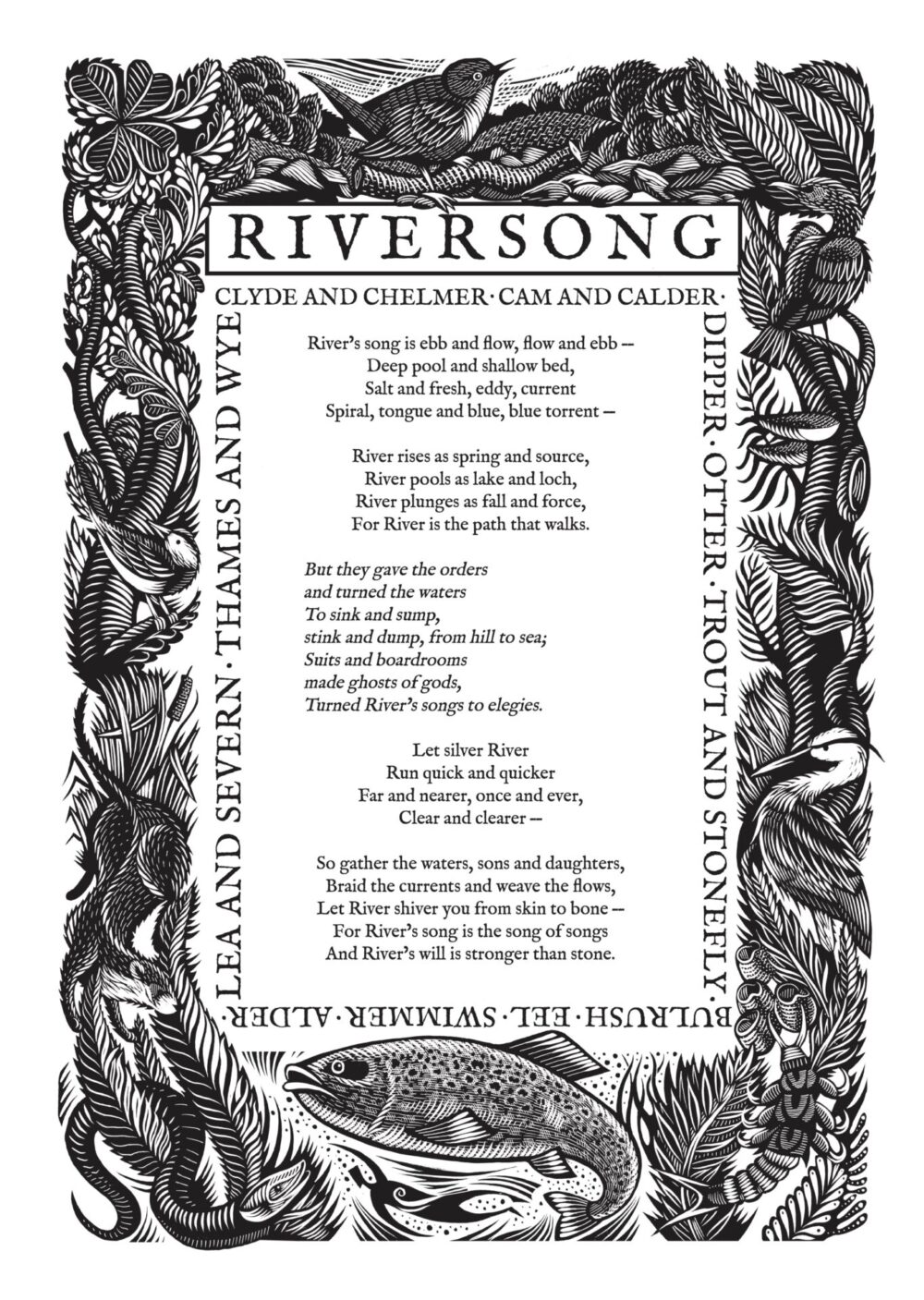‘Our fate flows with that of rivers, and always has’, write Robert Macfarlane and Nick Hayes as they introduce ‘Riversong’ — their latest collaborative poster. Following in the footsteps of ‘Heartwood‘ — created ‘for anyone defending trees, woods or forests from unjust felling’ — Riversong is ‘a “broadside ballad” which protests the slow death of rivers in the UK and around the world — and sings for their revival.’
 They continue: ‘Riversong is free to download, to print, to share, to set & sing, to speak aloud on a riverbank, to post on walls or windows, to adapt, to perform, to turn into a placard on a protest, to colour in, to share with your pupils, your community, your school, your campaign group…anything you want. No permission is needed for any use: the only condition is that you use it for the good of rivers and people.
They continue: ‘Riversong is free to download, to print, to share, to set & sing, to speak aloud on a riverbank, to post on walls or windows, to adapt, to perform, to turn into a placard on a protest, to colour in, to share with your pupils, your community, your school, your campaign group…anything you want. No permission is needed for any use: the only condition is that you use it for the good of rivers and people.
The art is by Nick Hayes and the words are by Robert Macfarlane, but there’s no need to credit either of them. This is a choral work, made from and by many voices. The border art is a single, sinuous flow of river-beings, human and more-than-human: Dipper, Otter, Swimmer, Stonefly, Bulrush, Alder, Cormorant, Scarlet Elf Cups, Heron, Eel…
The words running around the rim of the frame are imagined as River’s “undersong”, to be murmured under the main lyrics. Substitute the names of your own rivers and river-creatures there to make a new undersong.
“Broadside ballads” were, historically, single-side printed sheets designed for the purpose of announcing, declaring, performing and protesting. They were often set to song. For hundreds of years, the arts of woodcut, typography and poetry lived together in a symbiosis on broadsides: image, letter and verse. In seventeenth-century Europe, broadsides were produced and sold in their millions annually. In London around 1600, the area still known as Seven Dials was a centre of their production and printing. Legibility and memorability were key to the broadside tradition: we’ve tried to carry those on here.
In the UK, only around 1400 of the c. 43,000 miles of river have a clear right of public access. It’s hard to love a river you can never meet; hard to care for water you can scarcely see. Central to reviving our rivers is reviving our ability to connect with them, in imagination and in body.’
Unsurprisingly, it’s a sentiment we can get behind. Download your free copy of ‘Riversong’ here, and spread the watery word.